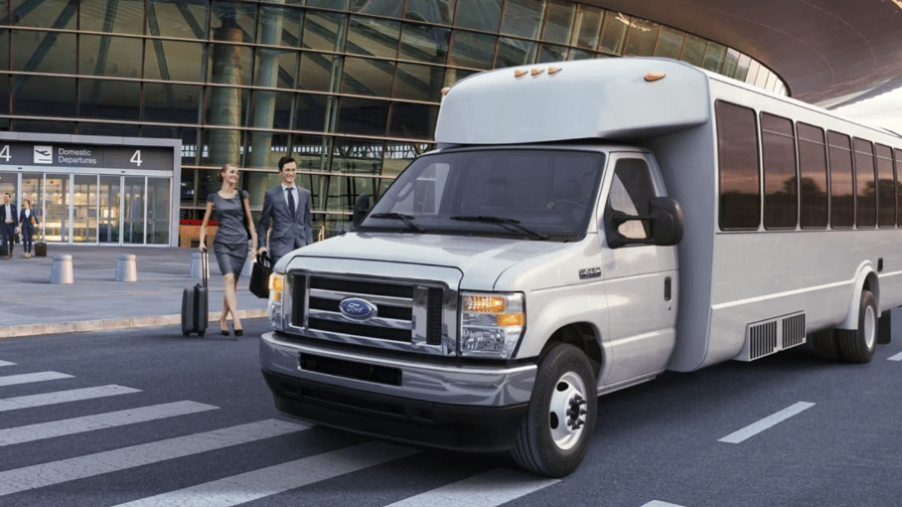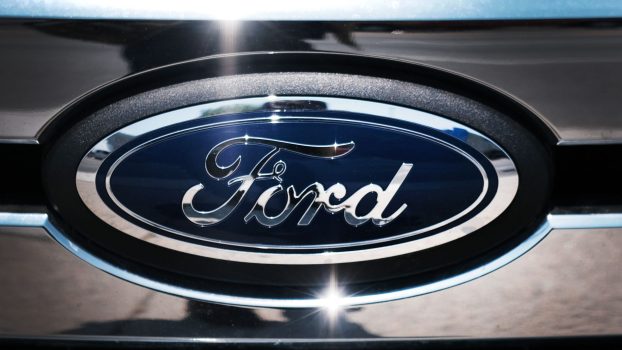
What is the Ford E-Series?
The Ford F-Series, the automaker’s lineup of pickup trucks, is well-known even among those relatively unfamiliar with the automotive landscape. The F-Series offers a range of models, from the full-size and best-selling F-150, the heavy-duty F-250 and F-350 offerings, and the commercial F-650 and F-750 trucks and chassis models. While these trucks are widely known, most are far less familiar with Ford’s bearing an “E.” So, what is the Ford E-Series? Here’s a look at the history and current market of the E-Series lineup.
What is the E-Series, and what does the name mean?
Though many may be unfamiliar with the E-Series name, it is another moniker for Ford’s “Econoline” van lineup. According to Car and Driver, the E-Series was introduced in the early 1960s as a lineup of full-size vans for use as either cargo haulers or large people movers. In its first generation, the E-Series was also available as a pickup truck.
The E-Series began using body-on-frame construction for its third generation (1975-1991), and that lineup expanded with the availability of a cutaway van chassis. These typically included the chassis, cabin, and drivetrain but otherwise did not include other bodywork, allowing for a wide array of customizable commercial or recreational uses. The cutaway chassis could be used to create everything from small buses to recreational vehicles, ambulances, or job-specific work vehicles.
So, while many may not be familiar with the E-Series name, there’s a good chance they have seen such vehicles on the road or have even ridden in them when they are used for certain purposes, including as airport shuttles or ambulances.
The current Ford E-Series lineup
Ford currently offers the E-Series in two guises, the E-Series Stripped Chassis and the E-Series Cutaway.
As the name implies, the E-Series Stripped Chassis is effectively just the underpinnings of a commercial vehicle. The Stripped Chassis only includes the drivetrain, engine, and steering components, allowing buyers to essentially build the model to their specific needs with bodywork, seats, and other necessities, typically for delivery van uses. Three wheelbases are available, either 138, 158, or 176 inches, and two options for gross vehicle weight rating (GVWR). Power comes via a 7.3-liter V8 engine.
The E-Series Cutaway is like the Stripped Chassis — for instance, it’s powered by the same 7.3-liter V8 — but these models also include a fully built cab complete with seats, doors, and bodywork over the engine. As such, the E-Series Cutaway offers turnkey operation while allowing customers to customize its application rear of the cab.
Not all Ford models wearing an ‘E’ are from the E-Series
Ford has long used similar naming designations for its models, like when its lineup of sedans all bore monikers beginning with the letter “F” (Fusion, Focus, Fiesta). As a result, Ford’s lineup can be a bit misleading for immediately discerning what is and isn’t an E-Series model now that Ford is offering electric vehicles.
For instance, the E-Transit is offered as a commercial van or as a cutaway chassis, but in this instance, the “E” in E-Transit designates it as an electric vehicle. The E-Transit was introduced for the 2022 model year. Of course, there is also the Ford Mustang Mach-E, which is about the opposite of the E-Series as an athletic, coupe-styled passenger car. And, like the E-Transit, the Mach-E moniker denotes the model is all-electric.




